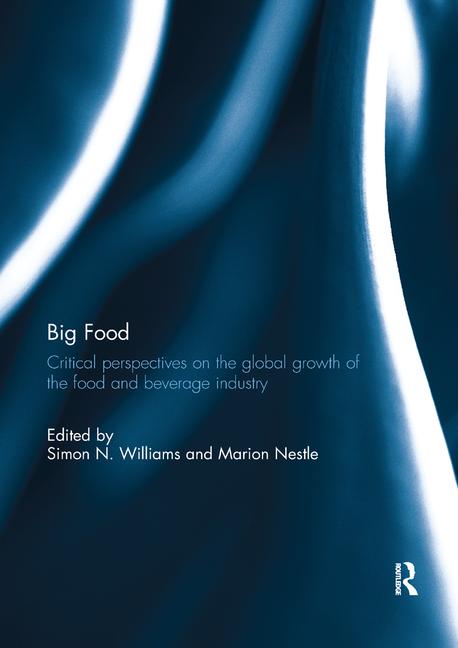The Wild Side of Flavor
Consumers are getting more adventurous and flavors are getting wilder

As exotic fruits and vegetables become more available, their flavors will appear in new products.
SOURCE: Sensient Flavors/Sensient Technologies Corp (www.sensientflavorsandfragrances.com)

Consumers are eager for more complex flavors, seeking sweet & savory, heat and citrusy notes.
SOURCE: McCormick & Company Inc. (www.mccormickflavor.com)


With something like 7 billion flavor preferences in the world, accurately forecasting what upcoming flavor trends will be in 2018—or any year—can be considered something of an exercise in audacity. A flavor trend can explode out of nowhere, fast, and be completely spontaneous.
Flavor trends are no longer as focused as the days when the Cajun explosion could dominate every menu. But distinct patterns are there. “Heat alone is no longer enough,” says Anne-marie Ramo, a research chef and food writer with more than 25 years of experience in flavor development. “Consumers are looking for heat that adds complexity. Middle Eastern and Asian flavors continue to trend high, but not the predictable curries and General Tso’s Chicken. Flavors like tikka masala, South African peri-peri, and Korean gochujan are breaking out into the mainstream.”
The past few years have seen heat and spice grow and dominate in the form of everything from garlicky sriracha red chili sauce to the similar-yet-distinctly-different North African Berber harissa to the milder Korean version, gochujang.
“I think 2018 will usher in a rise in sour seasoning blends coating items like chips, and popping up in prepared foods and condiments—think: kimchi catsup,” says Ramo “The interest in North Africa and Middle Eastern flavors will also expand interest in seasonings used in schwarma, falafel, and similar foods.” Ramo also singles out the continued popularity of turmeric as a nutraceutical. “This approach is going to drive a lot of flavor development,” she adds.
On the non-savory side of the flavor spectrum, while “pumpkin spice” has managed to become a perennial flavor profile so predominant as to become the butt of late-night comedians everywhere, under the laughs the telling notes to pay attention to are those of cinnamon, nutmeg, mace, and clove.
These healthful spices were originally used as much for health and food safety purposes (such as to preserve meat) as to impart bold flavors. As such, they’re due to make their way into savory formulations again. This will coincide with the increasing popularity of such culinary influences as Filipino, North African, and Persian.
A Sweet Sour Note
The fermented food craze of the last couple of years brought us kimchi and sauerkraut and kombucha. This will translate to a greater use of fruit vinegars and pickled items, but overall the theme will be expressed as sweet & savory and as sweet & heat.
Tempering hot chili peppers with a bright acidic component has made the mix of red pepper and vinegar a classic, but the big difference that’s advancing in culinology is the level of heat. American consumers are no longer wimps. Nowhere is this better evidenced than by the recent appearance of peppers such as the bhut jolokia “ghost” pepper and the Trinidad Scorpion—each hundreds of times hotter than jalapeños—in a number of successful packaged foods, snacks, and condiments.
Sharone Hakman, chef and founder of ChefHak Inc./Hak’s BBQ Sauces, agrees. The crafter of artisanal sauces and dressings notes that, “higher acidity sauces will be a trend, as sauces in general are trending upward.”
“Sour, too, seems to be the flavor coming into its own,” says Ramo. “It’s only going to get bigger in 2018. Millennials who spent their childhood eating extremely sour candies are growing up and looking for that pucker in more grown-up foods.”
Vinegar, tomatoes, and citrus have been big bearers of the astringent flavor notes consumers are now craving. These will be more defined, with ingredients such as yuzu, the Asian fruit that tastes like a three-way cross of a lemon, lime, and tangerine and has been making a strong comeback in cuisine recently. Brisk-yet-sweet/sour items, like the South American Inca berry (golden choke cherry) and cucamelon, and the South Asian tindora, (similar to the cucamelon) are awaiting only wider availability to take off from ethnic markets into the mainstream.
“Use of ingredients like apple cider vinegar, that have nutritional benefits, will grow in food and beverage development in 2018,” Hakman adds, pointing to the continued merging of flavor and health. With his famed expertise in that traditional merging of heat, acid, and sweet that forms the core of barbecue sauce, Hakman also agrees that heat will continue to rise. “We’ll also see the trend in different exotic chili peppers continue to show,” he emphasizes.
Layering Flavors
As with the increased focus on spice, acid, and heat, so too will it be for the use of spirits in food formulations. The past few years demonstrated strong interest in crafted fermented beverages such as beers and ales that are imbued with strong flavors of fruit and spice. Culinarians already have been reverse-engineering those fruity, astringent, yeasty, and hoppy flavor mergings into food products.
Strong, floral and botanically flavored wines will take the fermented grape notes closer to the vinegar these wines become without losing their sweetness and depth. Adding to such complexity will be flavors such as coffee, cocoa, and tea used as seasonings.
“Coffee, cocoa, and smoked spices, along with functional ingredients and superfoods are making their way into seasonings,” explains Hakman. Look for cascara, the dried fruit of the coffee cherry, to gradually trickle into formulations, especially hot beverages. This deeper push into complexity of flavors with multiple notes will translate into sauces and condiments to give them more strength to compliment savory and umami flavors of mushrooms and meat.
While trying to predict what flavor notes will break big in the near future involves as much guesswork as research, the key take-home is that the average American consumer isn’t so average anymore. Although successfully translating taste trends into product development always involves risk, research chefs can feel confident pushing the envelope on flavors.
Written by David Feder, RDN, Prepared Foods executive technical editor. Readers may contact him at federd@bnpmedia.com or at 847-405-4081. Prepared Foods also thanks the following companies for sharing annual flavor trends research: McCormick & Company Inc., Kikkoman Corp. Sensient Flavors/Sensient Technologies Corp. and McIlhenny Co./Tabasco Brands.
REALLY Umami
The meaty-mushroomy flavor of umami has become well-indoctrinated into the American palate. One of the best ways to add that to a formulation, especially a vegetarian one, has been through soy sauce. But that also requires incorporating a liquid. Granulated soy sauce, however, puts powerful, concentrated umami flavor literally in the palm of your hand. The coming year will see powdered soy sauces break huge onto the culinary scene.
Looking for a reprint of this article?
From high-res PDFs to custom plaques, order your copy today!









